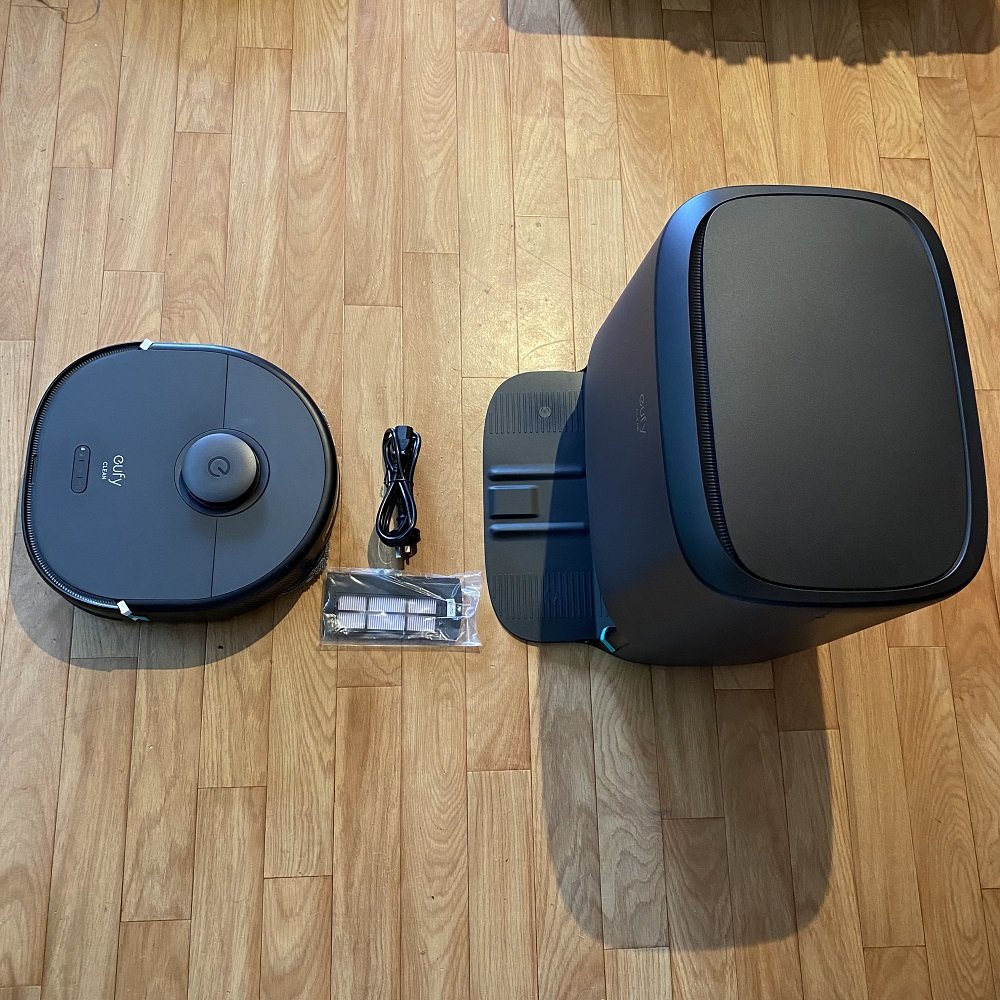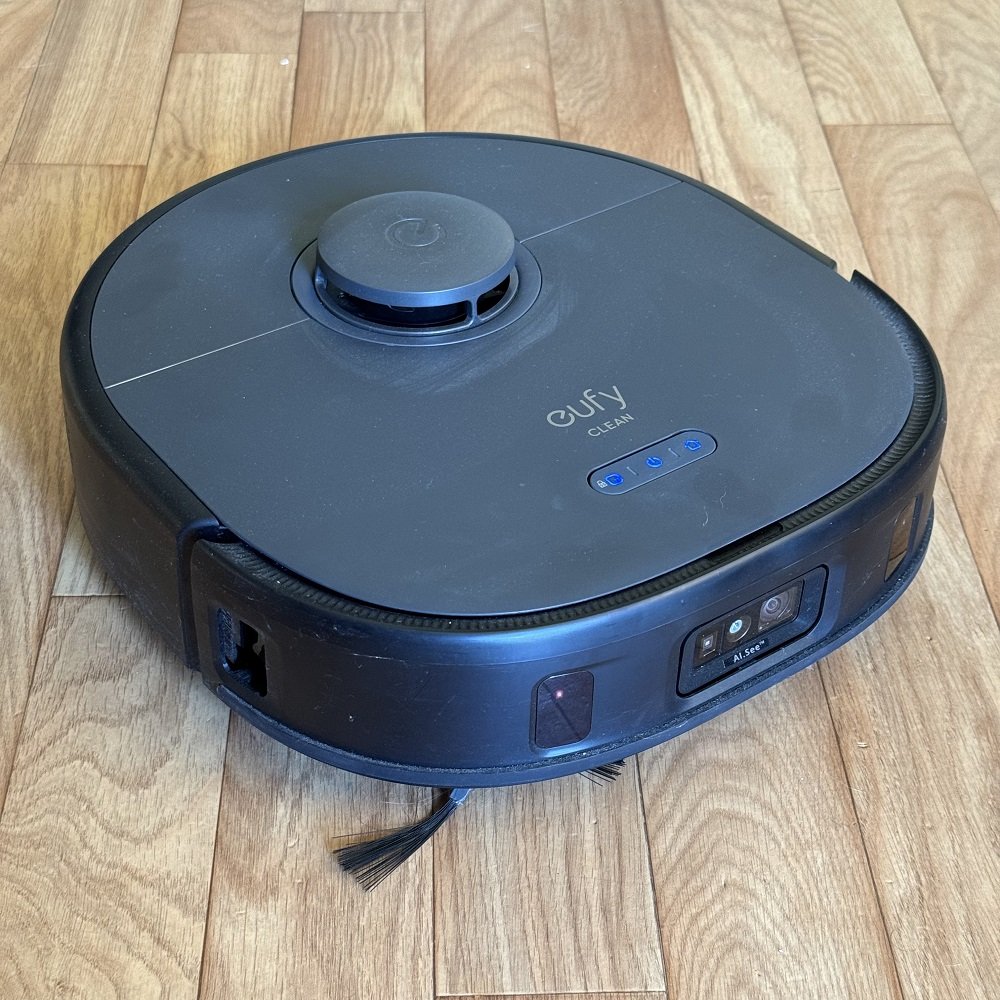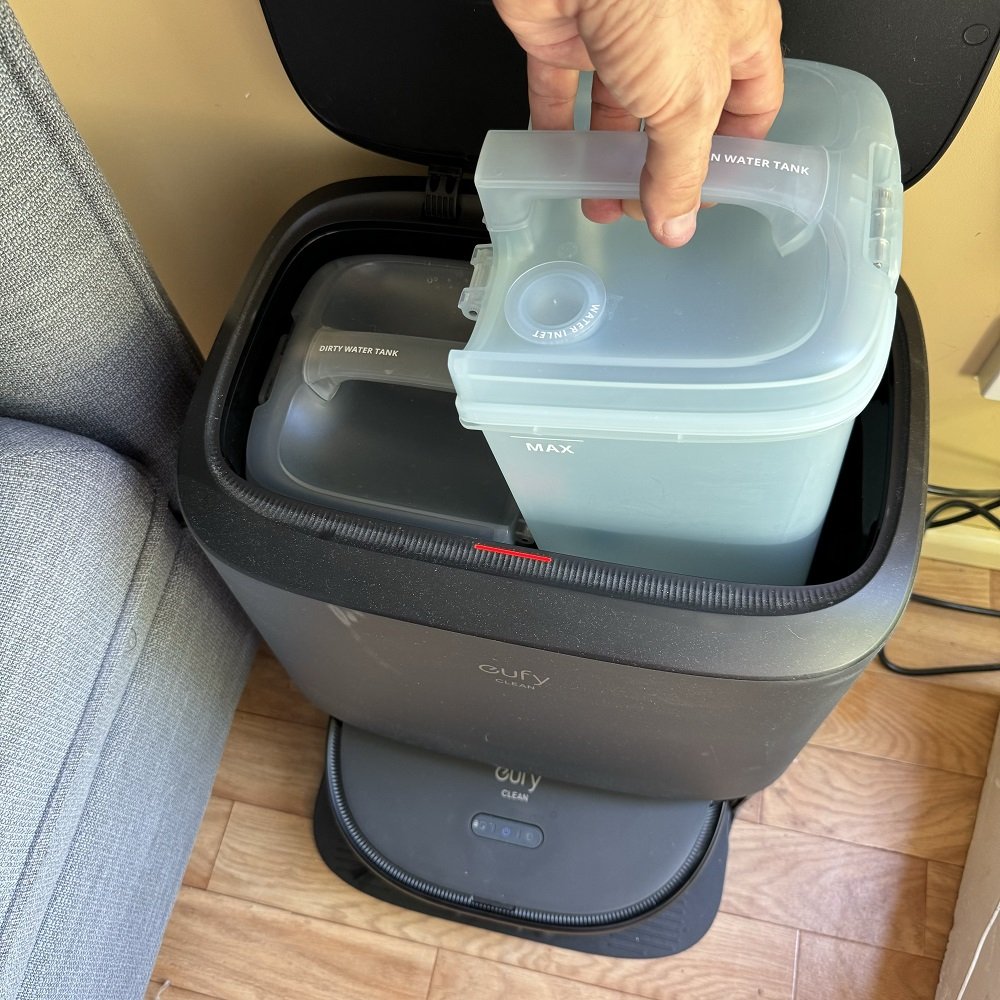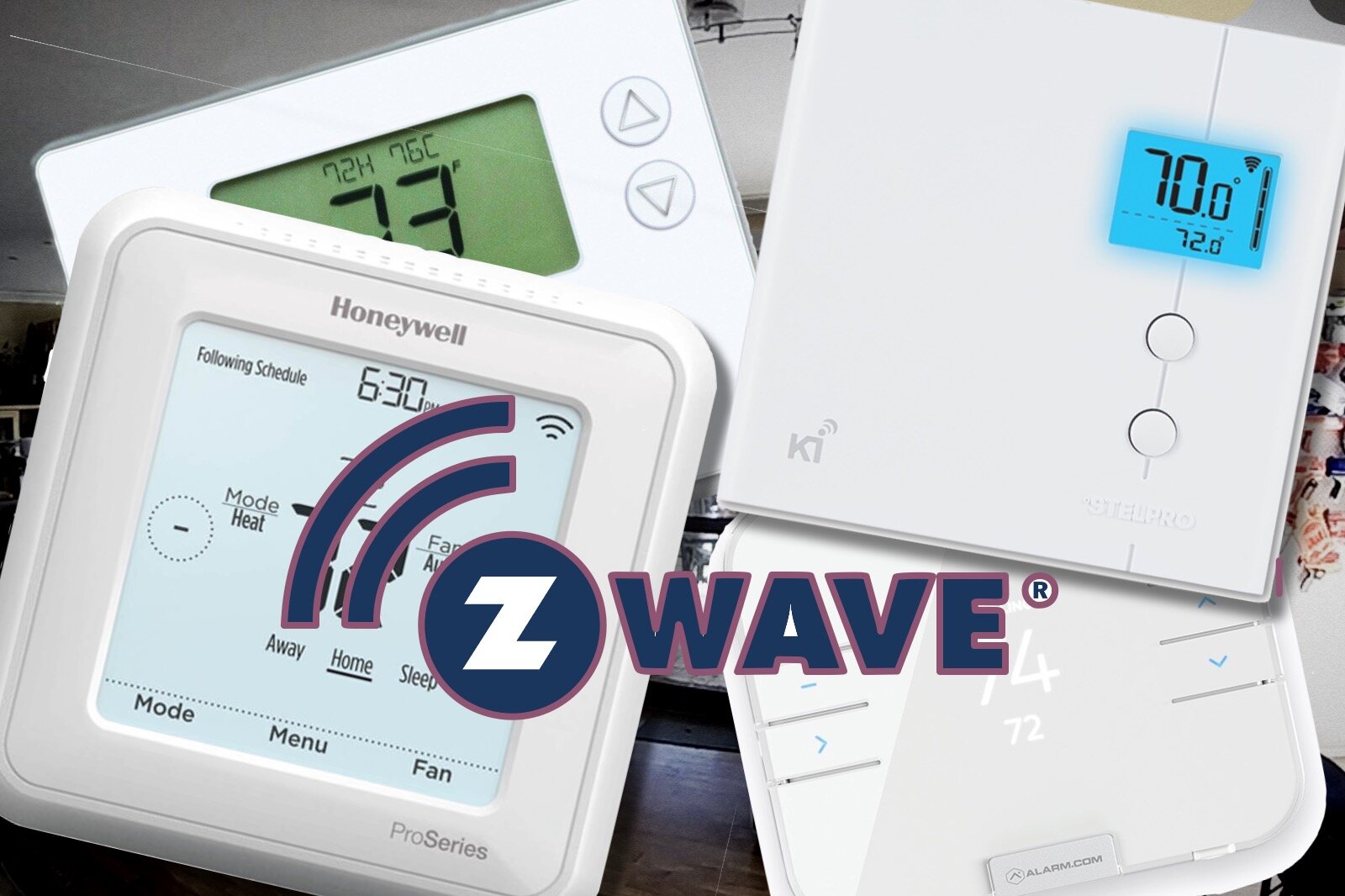Eufy X9 Pro Robovac Review: Smart Hybrid Cleaning
When you buy through links in this article, I may earn an affiliate commission. Learn More.
I’ve been using various Roomba robovac models for many years now and have loved the convenience and, frankly, novelty of having this little robot run around the house for me. When Eufy announced the X9 Pro CleanerBot, however, there were a number of features that caught my eye, not least of which was their approach to the hybrid model with their MopMaster design, and the extra obstacle avoidance tech provided by multiple cameras.
Having run the X9 Pro through its paces for several months now, I can say I’ve been impressed with its performance, quiet operation, clever navigational abilities, and effectiveness at doing the actual job pf cleaning the floor. It’s not going to replace the thoroughness of a good steam mop, but for day-to-day maintenance cleaning it gets the job done. My biggest gripes would be the relatively small dust bin, and the somewhat poor design of the roller brushes from the perspective of keeping them tangle free.
Read on for details on these minor gripes, and how I’ve found using the device as an everyday tool.
The Good
✔ Impressive navigation accuracy✔ Low maintenance mop function
✔ Good suction and mop pressure
The Bad
✔ Small dust bin✔ Mop leaves a gap alongside walls
✔ Roller can be awkward to detangle
The Eufy X9 Pro CleanerBot arrives in a fairly large box thanks to the huge docking station needed for the MopMaster functionality. The X9 doesn’t have a self-emptying dust bin, but rather uses the dock to hold two large water tanks - one for clean water and one for wastewater - which are used for priming and cleaning the two mop heads during operation. These mop heads are located at the rear of the robot so that it can vacuum and mop at the same time and are able to raise and lower themselves automatically as required depending on the floor surface.
The water tanks are easily accessed by flipping up the top lid of the docking station, and they simply lift out using the providing handles for filling or emptying when needed. Similarly, the dust bin is access on the robot but flipping up the front, top panel and pulling out the bin upwards.
The robot has three touch buttons on the top, clean/pause, home, and a child lock to prevent tampering with the dust bin and the Wi-Fi setup button, which is also located under the cover. A plethora of sensors can be found around the body, with the LiDAR scanner prominent on top, multiple forward and side infra-red proximity sensors, an ‘Ai-See’ forward camera for object detection and avoidance, floor detection sensors around the underside to avoid falling down stairs, and a carpet detection sensor to drive the mop raising behavior.
What’s in the box
Multiple sensor are on board
Two Mop heads (replaceable pads)
Installation and Setup
The Eufy X9 Pro is basically ready to go out of the box, you need only plug in the base station and pair the robot with the Eufy Clean app. This process is straight forward, but I was concerned I’d have to create another Eufy account. Thankfully I found my existing Eufy Security app account worked, which is not made clear in the sign up steps.
Placing the base station require a bit of thought given its size. I didn’t want it too prominently on display, but it had to be easy for the robot to get to reliably. After some testing I was able to place it out of the way in the corner, concealed by a couch. The X9 Pro’s excellent navigation accuracy means it can find its way in and out without any issues.
Interestingly, the Eufy Clean app revealed functionality to me over a few days. I was able to do basic cleaning runs right away, but only on an ad-hoc basis. It wasn’t until later it told me about mapping the house and drip fed me capabilities like custom cleaning modes, schedules, and room-by-room cleaning options.
Maybe this is a good way to ease people into things, but it was an unusual experience to have it hidden from me initially. Once I was able to have the robot do a mapping run, things became more as I expected and I was able to set up no-go zones, named rooms, and have the robot go to a specific location to work instead of just find its way around.
The mapping process was fun to watch. The robot would drive down the center of the hallway, turn into each doorway and proceed to the center of the room. Then it would kind of look around, turning on the spot, then go back the way it came and onto the next room. It was able to complete the whole house in only a few minutes, and did a surprisingly good job of defining where the room boundaries were.
After it was done, I could edit the map to clean up some of those boundaries more to my liking, mostly in the open-plan living area and to tidy up some of the doorways to facilitate easier cleaning patterns (not having to dodge around a doorway that was protruding a little into the other room, for example).
Configuration options
The mapping function is crucial to getting the most out of the X9 Pro, the map is saved in your Eufy Clean account and can be shared with other users by invitation. It’s possible to enable a multi-map setting which allows you to create and store multiple maps, such as for multiple properties or homes with more than one floor. This way you can select the appropriate map to use for any given job.
Maps can be edited to define room boundaries by using a simple cut and merge system. With the map open you can use the cut of merge tools to divide rooms into smaller chunks, and then stitch them together to get the precise shape you want. You can also specify no-go zones - either as a line or a rectangle - that the robot will not cross. This is useful for keeping it from bumping into delicate or unstable objects, or getting tangled on rug tassels or other materials that you don’t want it to try and vacuum.
Schedules are, of course, available, and you can set up jobs to do the whole house or just select rooms based on the loaded map. For each job you can also specify the cleaning mode to use. Either a specific mode (mop, vac, or both) and the suction and water level to use, or you can select the ‘custom’ option. This option uses predefined custom settings for each room, so you can specify the mode and intensity on a per-room basis.
The X9 Pro helpfully provides clear voice updates on what it’s doing, or if it’s having trouble. The sound quality is very good and the playback is loud enough to hear from other rooms. There are a dozen languages to choose from for this, and you can turn the volume down if it’s a bit intrusive.
Additionally, there are various optional settings, like Ai-See for obstacle avoidance, BoostIQ which increases suction when carpet is detected, and the option to upload the cleaning logs on robot performance to help with product improvement. While Eufy assures us no personal data is included in this, it is enabled by default and probably should be a prompt in the first few days of using the app.
The map keeps tabs on what the X9 has done
Select mop/vac modes and set the intensity
Keeps tabs on your consumables easily
Real World Performance
Navigation
I found the Eufy X9 Pro able to navigate well under a variety of challenging circumstances. This includes being able to find it’s way between the chairs of my dining table, which are just wide enough for it to squeeze between. It has been fascinating watching it not give up and carefully fine tune it’s approach until it gets the angle just right to go through.
Against regular walls it breezes along with having to bump at all, but this doesn’t go as well where the surface is below the view of the LiDAR scanner (such as a book case). The scanner also, fairly, had issues with full length windows. The glass is permeable to bother the laser and infra-red proximity sensors, so it does have to bump it’s way along that edge. I was able to tighten this up a bit by using a no-go zone to make it clear there wasn’t a room on the other side of the glass, which helps it navigate more seamlessly along that wall.
The AI.See camera works quite well, identifying common objects like thin poles, shoes, discarded clothing, cables and such. When it sees an obstruction is marks it on the map with an icon of what it thinks it is and goes around it. It’s not always successful as smaller problem items like string or ribbon will get run over and cause a tangle in the roller.
Substantial ridges are also handled well. I have a few transitions between floor surfaces where there is some sort of ridge, either an edge strip on carpet or a raised edge onto tiles. At first I thought the X9 Pro wasn’t going to pass this test, it appeared to get stuck on the carpet edge strip. Thankfully, it recognized this situation and worked its way into a better angle and seemed to give an extra boost to the motor speed to get over it. I’ve since seen similar behavior getting up onto the tiled areas.
Cleaning
Vacuuming has been reasonable. I have dog hair to deal with, which creates an excess of cleaning on both hard and carpeted surfaces. On hard floors the vacuum picks it up without issues, and on carpet it does a reasonable job of maintenance cleaning, but won’t get up the heavily trodden in stuff. This is not unexpected as even the hand vacuum struggles to make a dent in this case. The X9 Pro offers 5500kPa of suction, which is at the high end of the competition, and with BoostIQ and manual control over suction levels I’m seeing good results for a robovac under most circumstances.
The biggest issue with vacuuming is the small size of the dust bin. Having used an older Roomba for many years I was used to being able to let it run for a week or so before having to worry about this, but with the higher suction power and small size I’m finding it really needs to be emptied for every job. It’s easy enough to do, but without a self-emptying system it’s a hit on convenience.
The MopMaster function was of particular interest to me, and something I was keen to test. I found the design interesting in that it wets the mops at the base station rather than carrying a water tank, cleans the mop pads regularly, and then dries them using a heated blow dryer when the job is finished to avoid odor build-up. Does it work well? That depends.
The X9 Pro doesn’t just wipe down the floors but uses a down force of about 1 kilogram on the two counter-rotating mop pads. The combination of rotation and pressure does do a decent job of maintenance cleaning, but it’s not going to be as good as, say, a steam mop, and it’s not for cleaning up spills. For getting grime, footprints, dried spills and such dealt with, though, it does the job well enough, and the floors dry fairly quickly too. Evidence of this can be seen in the wastewater tank after a job.
This is not very big for the suction on offer
It’s clearly cleaning something
Water tanks just lift out
Ease of Maintenance
I’ve already talked about the smaller size of the dust bin, which is minor gripe. A more significant one for me is the design of the roller brush. Having family members with long hair it’s inevitable that hair gets picked up and wound around these brushes. It’s something I’ve had to deal with constantly with hand vacuums, robovacs, and even the pool robot.
The problem with the X9 Pro is that the roller bush design extends the rubber brush over the spindle on each end, like a shroud of sorts. Hair gets wound around the spindle inside this shroud, and it’s quite difficult to remove it, necessitating pliers and pick it out from down inside. I’m not sure why Eufy went with this, but other vacs have the end of the roller closed, so it’s easy to pull the hair off the end of the spindle as it’s all on the outside.
For the mops, the pads are removable and can be replaced as needed, and the water tanks in the base station are very easy to handle. They pull smoothly out of the base station using the provided handles and have a simple flip-down catch to open the lid on each for filling or emptying. Just fill the tank to the line and drop it back into the base station.
Smart Home Support
Eufy supports Amazon Alexa and Google Assistant for voice control of your X9 Pro. This is a bit limited, however, as it only allows you to start and stop auto cleaning. Room names are not recognized, so you can’t get specific.
Alternatives
Switchbot S10
Switchbot has come out with a strong competitor to the X9 Pro with the Switchbot S10. This unique robovac has a dual docking station design; one connects to your plumbing to automatically fill and drain the mop system (which uses an onboard tank), and one to empty the dust bag and dry the mop. Unlike the X9 Pro, the mop is a roller design, good for wiping sticky substances, but less effective at removing trodden in grime. Still, with 6500kPa of suction force, and fully automated operation it’s one of the best robovacs out there right now, but you’ll pay a premium for it.
Eufy X10 Pro Omni
If you’re prepared to pay a bit more you might want to hold out for the Eufy X10 Pro Omni. The X10 addresses some of the shortcomings of the X9 by adding a self-emptying dustbin, increased mop pressure, 8000kPa suction, increased obstacle recognition, and a automatic detangling comb for the roller brush. While more expensive than the X9, it’s considerably less than the Switch S10.
EVOVACS Deebot X1 Omni
Another good option is the Deebot X1 from Ecovacs. This offers a 5000kPa suction vacuum paired with a self-filling and emptying mop and dryer. Sporting a similar rotating mop system to Eufy, dual side brushes, and enhanced 3D room mapping the X1 is worth checking out.
The Verdict
The Eufy X9 Pro is a reliable hybrid robovac that provides a good balance between automation and ease of maintenance, apart from the odd design choices around the roller brush with respect to getting hair tangles out from the spindle. The MopMaster function makes for easy, odor free floor maintenance thanks to the ability to define custom presets for which rooms to mop and which to only vacuum, along with an array of water and suction settings.
The X9 handles navigation well thanks to an array of top, front and side sensors, including the ability to visually identify obstructions and effectively work around them. Mapping of the house is effective, and allows you to initiate custom room cleaning with a tap on the Eufy Clean app, while it can also handle changes to room layouts and contents on the fly without issue.
Clear voice feedback ensures you’ll always know what the X9 Pro is up to, and you can also initiate and stop cleaning with voice commands through Alexa or Google Assistant. These functions are a bit limited as you can’t specify rooms or zones that you have set up, but it’s almost a minimum expectation with modern robot vacuums now.
I’ve enjoyed using the X9 Pro, and it deals with most situations in a busy household without issue. I just have to remember to empty the dust bin after each cleaning run as it’s a bit small for the amount of dirty that it is able to collect. Besides that, it’s been a great performer and a joy to use.














